- Joined
- Jan 6, 2013
- Messages
- 5,648
- Reaction score
- 11,336
The Old Croxton Park House is a Grade II listed building situated near the village of Croxton Kerrial in Leicestershire (mid-way between Grantham and Melton Mowbray). It was built in 1730 by the third Duke of Rutland using materials from the 12th century Premonstratensian Priory as a hunting lodge. In its prime it looked like this:

Apparently inhabited up to and during the Second World War, post-1945 the lodge became unused and the then landowner decided to remove the lead from the roof (rather ironic eh?). Perhaps unsurprisingly in the following few decades the lodge fell into disrepair.
I'd done a bit of research on the place and worked out how to get to it. The few pictures I'd seen on the web showed a house taken over by undergrowth and in an advanced state of dereliction. It was previously featured on DP back in April 2009 although the pictures have all disappeared now:
[ame="http://www.derelictplaces.co.uk/main/showthread.php?t=12313"]http://www.derelictplaces.co.uk/main/showthread.php?t=12313[/ame]
So I followed the road until it turned into a (pretty snowy) mud track, parked up and then walked the mile or so to the house. So imagine my surprise when I saw what I saw: all the undergrowth had been cleared and the house was completely scaffolded. So, what to do? Valor got the better of caution and I legged it over barbed-wire fences and in the door at the side of the lodge to get some internal shots. The fact that it was scaffolded and the undergrowth cleared points to one thing: that the building is going to be done up. So while I didn't get my atmospheric greenery-clad externals this has to be out-weighted by the fact that this lovely hunting lodge is going to be returned to it original state. Anyhow, on with the photos:
This was the view that first confronted me:
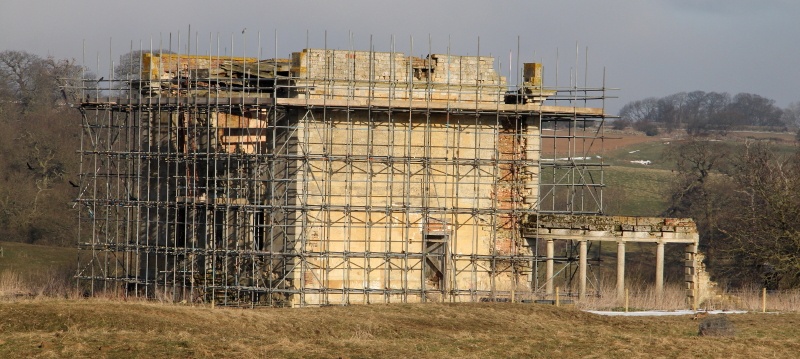
img8487_1 by HughieDW, on Flickr
This is the view of the main south entrance of the lodge:
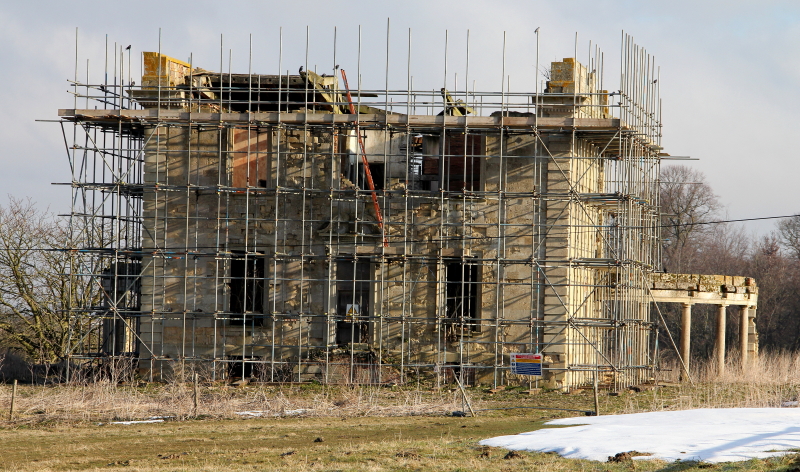
img8488_1 by HughieDW, on Flickr
This is a view from the North-East of the lodge:
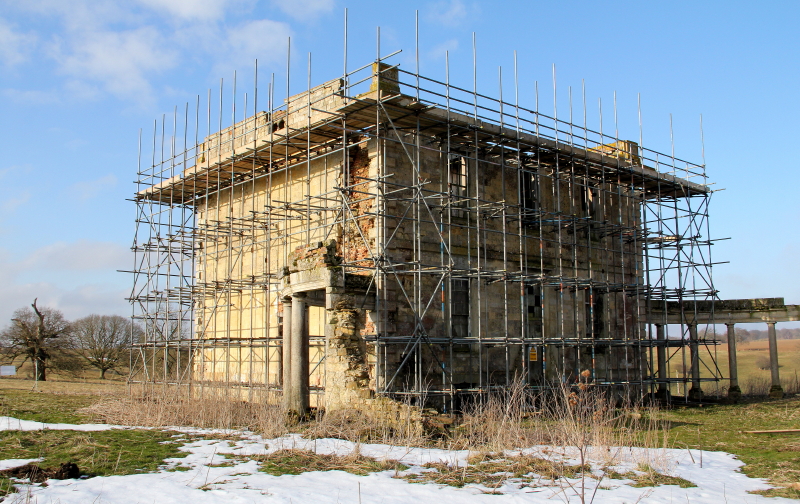
img8489_1 by HughieDW, on Flickr
And a close-up of the East wall and colonnade:
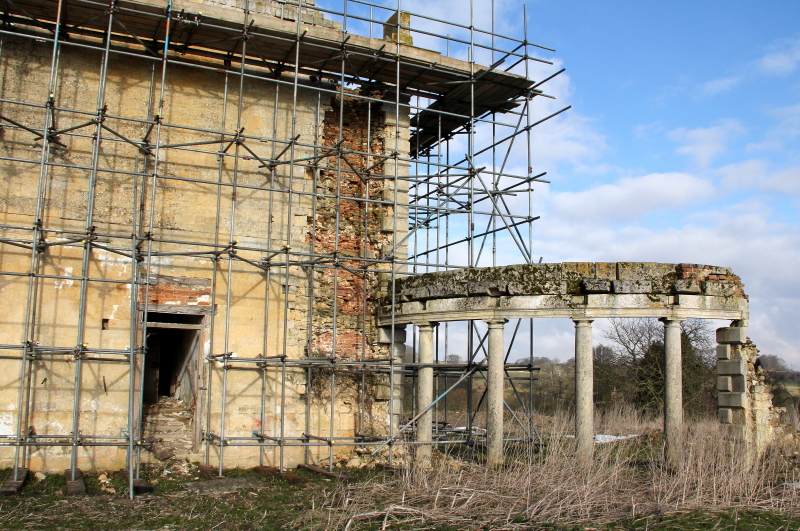
img8490_1 by HughieDW, on Flickr
OK, time to go in:
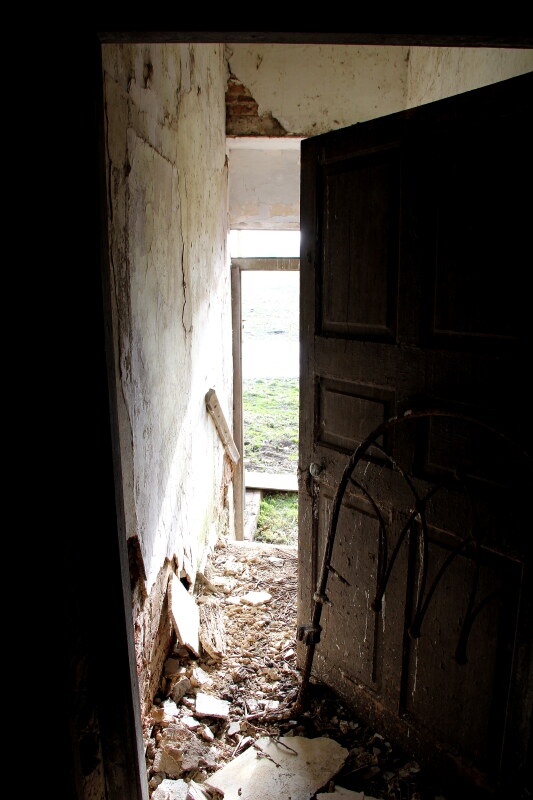
img8491_1 by HughieDW, on Flickr
This rusty iron single bed head has seen better days...

img8506_1 by HughieDW, on Flickr
Not too sure what this was used for:

img8504_1 by HughieDW, on Flickr
Loving the old Harrods box:
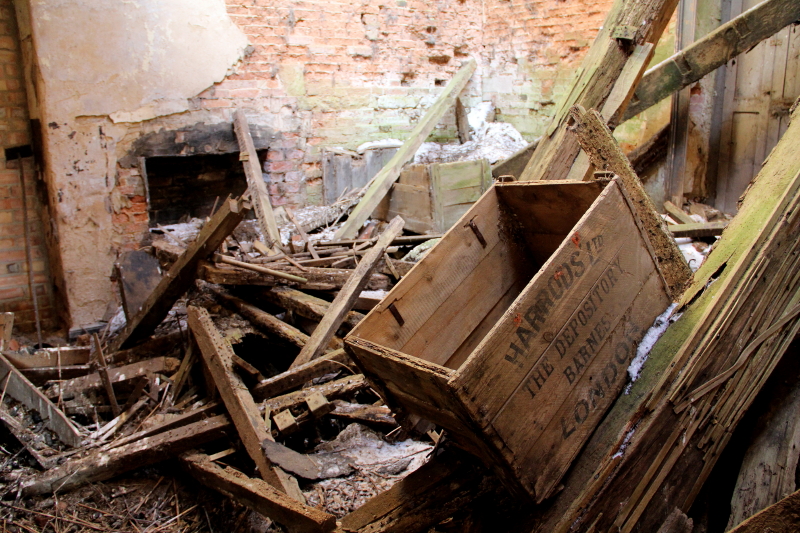
img8501_1 by HughieDW, on Flickr
Lots of work to be done, like finding out where these go...
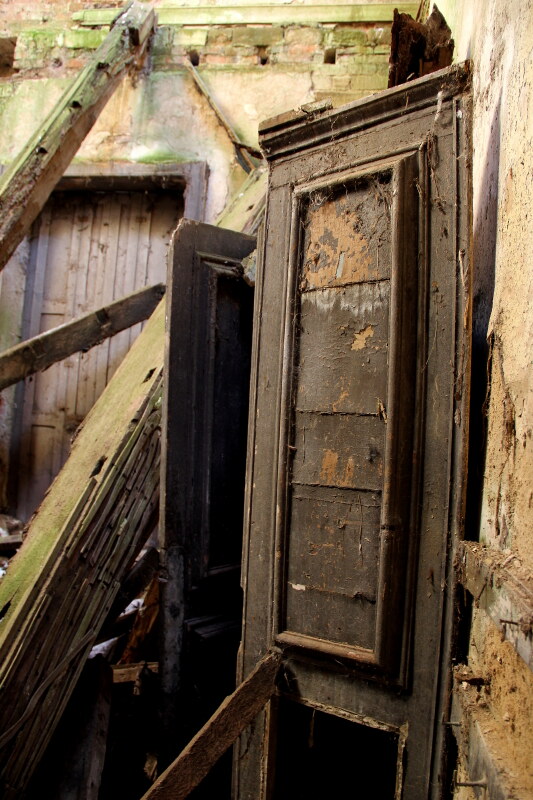
img8497_1 by HughieDW, on Flickr
Here the second floor has gone and that bit of roof don't look too safe:

img8496_1 by HughieDW, on Flickr
...and starting from scratch here:
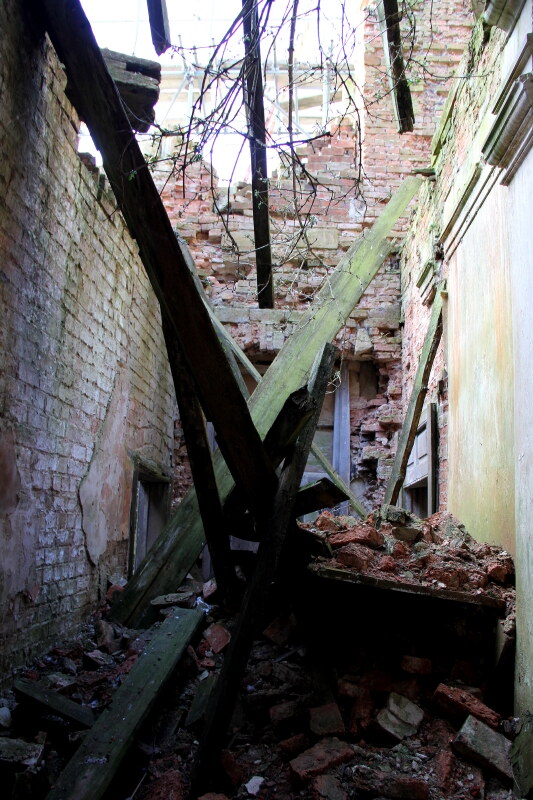
img8495_1 by HughieDW, on Flickr
This room isn't much better:
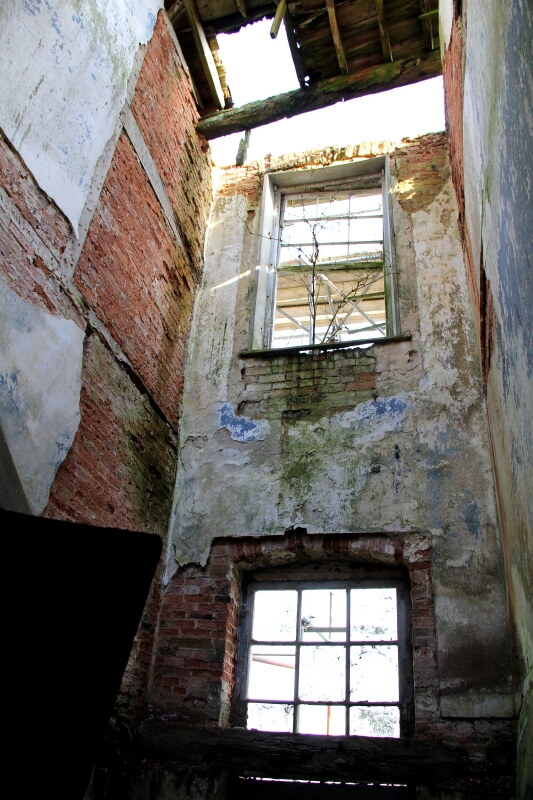
img8494_1 by HughieDW, on Flickr
Overall then, not quite what I expected but good to see a derelict house going the other way to what most go...

Apparently inhabited up to and during the Second World War, post-1945 the lodge became unused and the then landowner decided to remove the lead from the roof (rather ironic eh?). Perhaps unsurprisingly in the following few decades the lodge fell into disrepair.
I'd done a bit of research on the place and worked out how to get to it. The few pictures I'd seen on the web showed a house taken over by undergrowth and in an advanced state of dereliction. It was previously featured on DP back in April 2009 although the pictures have all disappeared now:
[ame="http://www.derelictplaces.co.uk/main/showthread.php?t=12313"]http://www.derelictplaces.co.uk/main/showthread.php?t=12313[/ame]
So I followed the road until it turned into a (pretty snowy) mud track, parked up and then walked the mile or so to the house. So imagine my surprise when I saw what I saw: all the undergrowth had been cleared and the house was completely scaffolded. So, what to do? Valor got the better of caution and I legged it over barbed-wire fences and in the door at the side of the lodge to get some internal shots. The fact that it was scaffolded and the undergrowth cleared points to one thing: that the building is going to be done up. So while I didn't get my atmospheric greenery-clad externals this has to be out-weighted by the fact that this lovely hunting lodge is going to be returned to it original state. Anyhow, on with the photos:
This was the view that first confronted me:

img8487_1 by HughieDW, on Flickr
This is the view of the main south entrance of the lodge:

img8488_1 by HughieDW, on Flickr
This is a view from the North-East of the lodge:

img8489_1 by HughieDW, on Flickr
And a close-up of the East wall and colonnade:

img8490_1 by HughieDW, on Flickr
OK, time to go in:

img8491_1 by HughieDW, on Flickr
This rusty iron single bed head has seen better days...

img8506_1 by HughieDW, on Flickr
Not too sure what this was used for:

img8504_1 by HughieDW, on Flickr
Loving the old Harrods box:

img8501_1 by HughieDW, on Flickr
Lots of work to be done, like finding out where these go...

img8497_1 by HughieDW, on Flickr
Here the second floor has gone and that bit of roof don't look too safe:

img8496_1 by HughieDW, on Flickr
...and starting from scratch here:

img8495_1 by HughieDW, on Flickr
This room isn't much better:

img8494_1 by HughieDW, on Flickr
Overall then, not quite what I expected but good to see a derelict house going the other way to what most go...
Last edited:




































